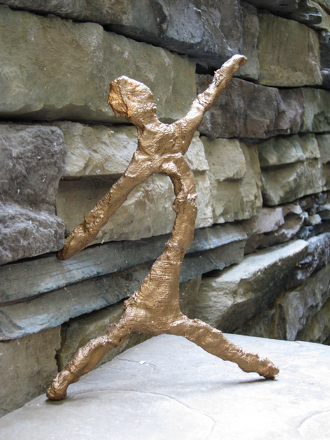Science project
How to Make a PVC Pipe Instrument
Sound is a neat thing. It’s really just vibrations in the air, but with it you can hear music, speech, movements, actions, trains, planes, and cars. Sound is often measured by its frequency. Frequency is measured in cycles per second with a unit called a hertz.
We describe sound as a wave; specifically, a compression wave. What that means is that sound travels as a force that gets transmitted through air molecules with an initial push. These pushed molecules bump into other air molecules and then bounce back, and they do this at a certain frequency, or rate. Sound travels a lot like the way movement travels through a slinky.
The pressure of air due to sound waves in a pipe (like a flute) looks a lot like a sine wave. If you have a pipe with an open end and a blocked end, the blocked end (often called the node) of the pipe doesn’t let the air change pressure much. An unblocked pipe also has a node, located in its center. The distance between nodes determines the frequency of sound wave vibration, and the higher the frequency, the higher the pitch. Let's learn how to make a PVC pipe instrument to see all of these concepts in action.
Problem
Make an instrument out of PVC pipe.
Materials
- Pencil & paper
- PVC pipe (½ inch Schedule 40, 4 feet or so)
- Duct tape
- Pennies
- Ruler
- Hacksaw
- Sandpaper (optional)
- Electronic tuner (optional)
- Adult
Procedure
Note: Read all the instructions and do your math before cutting your pipes!
- First, we need to do some calculations. Musical notes are all produced by sounds of specific frequencies. You can translate those frequencies to tube lengths using the speed of sound. Here’s how:

- To find out the length of tube you’ll need to produce a given note, insert your measurements (in inches) for tube diameter and the frequency of your desired note (in Hertz). The speed of sound (at sea level) is 13,397.244 inches per second. Plug these numbers in and solve for the length of the tube in inches. Here’s an example:

- You can use the internet to look up frequencies and choose any notes you want, but here’s a list of notes at certain frequencies to get you started. For the above calculation, we solved for the tube length necessary to produce a D at 587 Hz (which gives us a tube length of about 12.65 inches).
- D: 587 Hz, E: 659 Hz, F: 698 Hz, G: 784 Hz, A: 880 Hz, B: 987 Hz, C: 1046 Hz
- Have an adult help you measure and cut a length of pipe to match each note you’ll include in your scale. Make sure your pipes are cut slightly longer than you need so you can cut them down to tune them.
- Blow over the edge of the pipes (or slap one end with your hand) and use the tuner or just listen to hear if they’re the right length. Sand or saw them down as needed.
- Sand down one end of each pipe so that so that each pipe’s outside surface tapers down a sharp edge at the inside surface. This will make your pipes sound better.
- Line up your pipes side by side in order of ascending length, and duct-tape them all together securely. Make sure that all of the sanded ends are lined up as well.
- Play some notes! Rubber flip flops make great mallets to strike your tubes with.
Results
You made a pipe instrument that allows you to play notes on a musical scale.
Why?
What’s happening is called resonance: moving particles are forced to vibrate a specific number of times per second. You can change resonance by changing the length of your pipe. Let’s talk about why.
In air, the speed of sound is about 768 miles per hour. If you bump one end of an open pipe, you create a pressure wave that rides from one end of the pipe to the other. The pressure wave actually overshoots the open ends of the pipe, creating low pressure areas that draw air from inside the pipe. This begins another cycle with rarified air. This keeps happening back and forth until the wave dies down due to friction. Since sound has a characteristic speed, the number of times that this high-pressure/low-pressure cycle happens per second is directly dependent upon how long the tube is because it takes a certain amount of time for the pressure wave to get from one end to the other.
Education.com provides the Science Fair Project Ideas for informational purposes only. Education.com does not make any guarantee or representation regarding the Science Fair Project Ideas and is not responsible or liable for any loss or damage, directly or indirectly, caused by your use of such information. By accessing the Science Fair Project Ideas, you waive and renounce any claims against Education.com that arise thereof. In addition, your access to Education.com's website and Science Fair Project Ideas is covered by Education.com's Privacy Policy and site Terms of Use, which include limitations on Education.com's liability.
Warning is hereby given that not all Project Ideas are appropriate for all individuals or in all circumstances. Implementation of any Science Project Idea should be undertaken only in appropriate settings and with appropriate parental or other supervision. Reading and following the safety precautions of all materials used in a project is the sole responsibility of each individual. For further information, consult your state's handbook of Science Safety.













